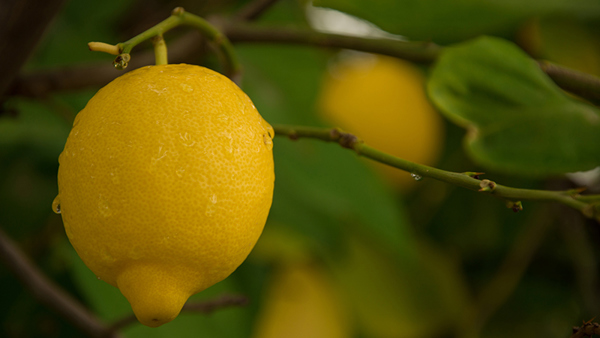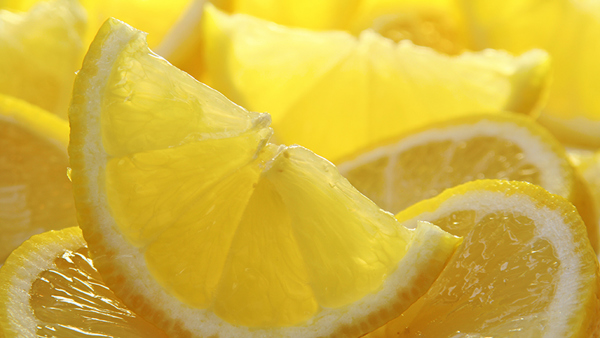Yates Account
Join now
Create a Yates account today!
Sign up to join the Yates Garden Club for monthly e-mails packed with seasonal inspiration, tips for success & exclusive promotions.
Plus if you’re a Garden Club member you can take part in the Yates Growing Community - a blog to share successes, get advice & win prizes in fun challenges along the way!

Forgot password
Enter the email address associated with your account, and we'll email you a new password.

Whether you are juicing them for fresh lemonade, squeezing onto fish & chips, including them in delicious Asian recipes or baking them into a citrus tart, there is no doubt that lemons are a staple in just about every kitchen. The trees can grow up to 4m, but you can also get dwarf varieties that grow up to 1.5m and are perfect for pots.
You do need a little patience though, as lemons (and other members of the citrus family) need at least 3 years before the first harvest.
How to grow Lemons in your garden
- Choose a sunny spot with well drained soil. Enrich the soil with Yates Dynamic Lifter Organic Plant Food. If the soil is clay based, improve soil structure by adding gypsum and forking in well. In poorly drained areas, citrus can also be planted in a raised mound of free-draining soil.
- Dig the planting hole twice as wide and to the same depth as the root-ball. Remove the plant from the container, gently tease the roots and cut away any circled or tangled roots.
- Position in hole and backfill with soil, gently firming down. Form a raised doughnut shaped ring of soil around the outer edge of the plant's root zone. This helps keep water where it's needed. Always water in well after planting to settle the soil around the roots and keep the soil moist for several weeks while the new plant establishes.
- Mulch around the base with organic mulch like woodchip or pea straw, keeping it away from the trunk.
- Water deeply, once or twice a week, depending on weather conditions.
- During the growing and flowering/fruiting season, feed with Yates Thrive Citrus & Fruit Granular Plant Food. Throughout the year, apply Yates Thrive Natural Fish & Seaweed+ Plant Food Concentrate.


How to grow Lemons in a pot
When planting in a pot, choose a dwarf lemon variety.
- Choose a pot at least 500mm wide. Position in full sun and fill with quality potting mix, such as Yates Nature's Way Organic Citrus & Fruit Mix. TIP: Consider placing the pot on wheels if you live in a cold area, so it can be easily moved inside or to a sunnier and more protected spot in winter.
- Remove the plant from the container, gently tease the roots and cut away any circled or tangled roots.
- Position in hole and backfill with potting mix, gently firming down. Water in well.
- Water deeply, 2-3 times during the week, depending on weather conditions.
- During the growing and flowering/fruiting season, feed weekly with Yates Thrive Citrus Liquid Plant Food. Throughout the year apply Yates Thrive Natural Fish Seaweed+ Plant Food Concentrate.
Growing Tips
- If you’re short of sunny spots in the garden, grow citrus in pots that can be moved to take advantage of changing patterns of sunlight.
- In heavy clay soils, it’s best to put extra effort into soil preparation. To check if your soil needs work, dig a hole and pour a bucket of water into the hole – if it takes more than 30 minutes to disappear, then you will need to improve your drainage. Consider raising the level of the bed as much as possible (at least 40cm above the clayey soil) with free draining garden soil, dig in gypsum to help break up the clay and add Yates Nature's Way Organic Compost & Soil Improver. Potted grapefruit should be grown in a good quality mix (such as Yates Nature's Way Organic Citrus & Fruit Mix) and moved into larger containers as they grow.
- Remove any small fruit that develop within the first two years - this allows the tree to devote its energy to growing strong healthy stems and roots.
- Some Lemon tree varieties:
- 'Eureka' produces fruit almost year round in warmer areas. The fruit is virtually seedless and has a thin skin. However, as lemons go, Eureka isn’t particularly cold tolerant. 'Villa Franca' is a relative of 'Eureka' that does better in inland areas, as well as in the subtropics.
- 'Lisbon' develops into a large, prickly tree that produces a heavy winter crop. It is very hardy and more tolerant than 'Eureka' to both cold and heat.
- 'Meyer' is a small grower that is thought to be a cross between a lemon and an orange. It's small size means it’s suited to pot culture and its cold tolerance sees it used widely in frosty areas.
- 'Lemonade' is much sweeter and doesn’t have the intense sourness of most other lemons. 'Lemonade' lemon trees are great for backyards as they don’t get much taller than 2.5 m and produce lots of fruit which can be peeled, segmented and devoured or juiced.
More Plants
Lemon trees can grow up to 4m, but you can also get dwarf varieties that only grow to 1.5m which are perfect for small gardens and for pots.
Feijoa
Feijoa trees are a familiar sight in kiwi gardens; they're also a great choice for an edible hedge. The delicious fruit can be eaten fresh; they’re also perfect for using in cakes, muffins, jams, cocktails, desserts, fruit salad and smoothies.
Raspberry
Raspberries are best when they're fresh, and you can’t get any fresher than picking your own! Delicious when eaten raw and in desserts, jam or jelly.
Limes
Lime fruits are known for their delicious juice and zest. A highly flavoursome ingredient used in sweet or savoury dishes and sensational in drinks.
Yates Thrive Citrus & Fruit Granular Plant Food
Fast acting, gradual feeding plant food specially formulated to grow citrus & fruit trees, with high potassium for more abundant fruit & added magnesium to help prevent leaf yellowing.
Yates Thrive Citrus Liquid Plant Food
Provides your citrus trees with the balanced nutrients they require for healthy growth, fruit production and development.
Yates Thrive Natural Fish & Seaweed+ Plant Food Concentrate
A complete plant food enriched with natural fish, seaweed, humates, molasses and more - boosted with NPK to improve plant and soil vitality.
















Share
Share this article on social media